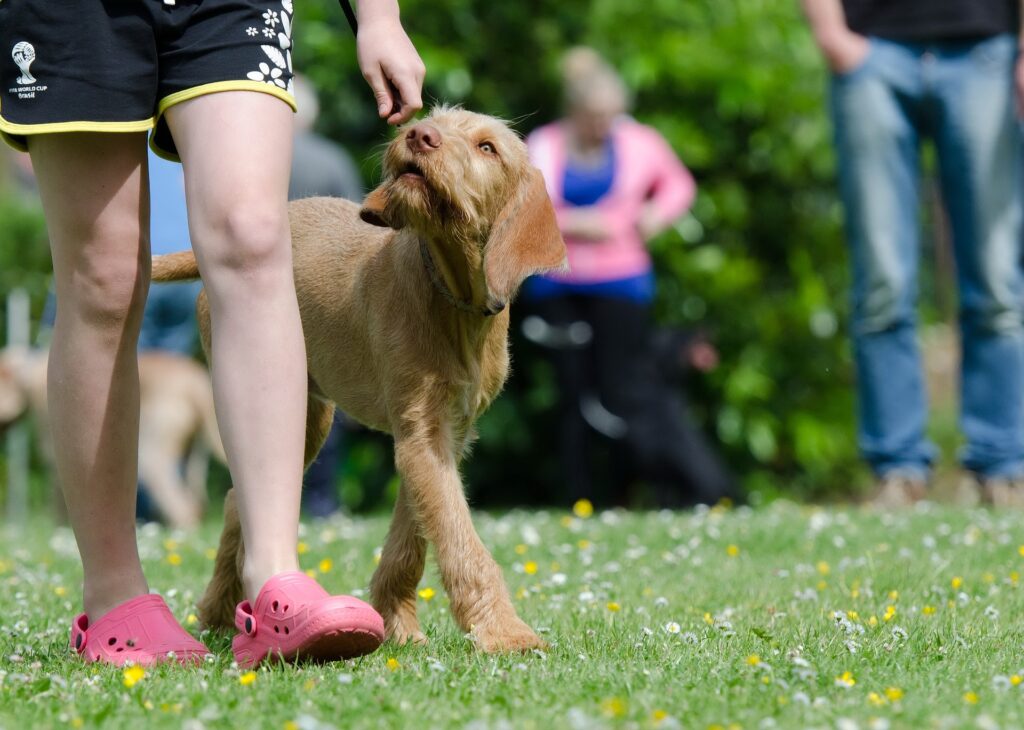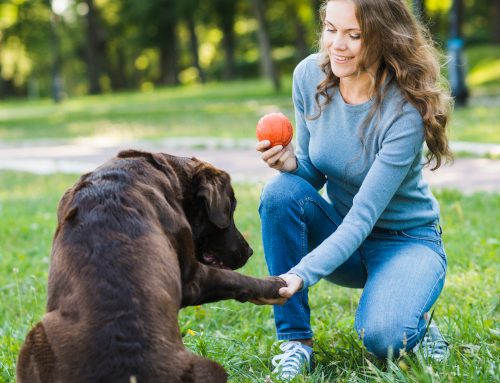 Dogs can be much more than pets. They are companions that can offer love and loyalty like no other. But building a bond with your furry friend can take time and effort. A strong relationship between you and your dog is the foundation for successful training. This article will guide you on how to bond with your dog and to develop a relationship based on trust and respect.
Dogs can be much more than pets. They are companions that can offer love and loyalty like no other. But building a bond with your furry friend can take time and effort. A strong relationship between you and your dog is the foundation for successful training. This article will guide you on how to bond with your dog and to develop a relationship based on trust and respect.
The first rule to building a relationship with your dog is to spend quality time together. Dogs need time and attention from their owners to feel loved and secure. Dedicate time to play with, walk and train your dog. Take your dog on daily walks, play fetch in the park, or go for a run together. These activities will help your dog feel connected to you and to create positive associations with you.
The second rule is to take your dog out into the world and experience life together. Dogs love to explore new places and meet new people. Take your dog to the beach, the mountains, or a new park. These experiences will provide mental stimulation and new smells and sounds your dog will enjoy. Socializing your dog with other dogs and people will help him become comfortable in different situations.
The third rule is to establish mutual respect. Setting boundaries is important because it shows your dog what is acceptable and what is not. Dogs need to know what is expected of them and what is off-limits. When your dog follows the rules, reward him with praise, treats or playtime. When he breaks a rule correct him with a firm and consistent tone. When you follow these steps, your dog learns to respect you and your authority.
The fourth rule is to develop a way to communicate each other’s needs. Dogs communicate through body language and vocalizations. Learn to recognize your dog’s signals and respond appropriately. Talk to your dog in a calm reassuring voice, show him that you are there for him. Use positive reinforcement to reward good behavior and avoid punishment. Dogs respond better to positive reinforcement than punishment, which can cause fear and anxiety.
When you follow these golden rules, you will build a strong bond based on trust, respect, and mutual understanding. Once you have established this bond, training your dog will become easier and more effective.
Understanding How Your Dog Learns
Dogs learn in five phases: the teaching phase, the practicing phase, the generalizing phase, the testing phase, and the internalizing phase. The teaching phase is where you physically demonstrate to your dog what you want him to do. Use positive reinforcement to reward your dog for following your commands.
The practicing phase is where you practice with your dog what you have just taught him. This phase is important to reinforce the lesson and make it stick. The more you practice, the better your dog will learn.
The generalizing phase is where you practice with your dog in different locations and environments. This phase helps your dog learn to generalize the behavior you have taught him. Take your dog to the park, the beach or a friend’s house to practice the commands you have taught him.
The testing phase is where you test your dog’s accuracy in newer locations with more distractions. This phase helps you evaluate how well your dog has learned the command. If your dog does not respond correctly, review and change your training. Keep testing until your dog succeeds.
The internalizing phase is where your dog does everything he is taught to do even without your commands. This phase is the most rewarding, as it means your dog has internalized the behavior and made it a habit.
Building a strong bond with your dog is essential for successful training and a happy relationship. It requires time, effort, and patience, but the rewards are well worth it. By following the four golden rules of spending quality time together, experiencing life together, establishing mutual respect, and communicating effectively, you can build a deep and lasting bond with your furry friend. And by understanding the five phases of your dog’s learning process and practicing the rule of the 3 Ps, you can effectively teach your dog new behaviors and commands. Remember patience, persistence, and praise are keys to successful dog training. If you wold like some additional help with these steps, Get a Free Dog Training Mini Course delivered to your email.
DISCLAIMER:
We use affiliate links and pay-per-action advertising. When you use these links to buy something we may earn a commission. Thank you for visiting and for your support.
PetsWebPages.com may contain copyrighted material. This use may not have been specifically authorized by the copyright owner. The material contained in this website is distributed for informational and educational purposes. Small portions of the original work may have been used but those portions could not easily be used to duplicate the original work. This usage constitutes ‘fair use’ of any such copyrighted material (referenced and provided for in section 107 of the US Copyright Law).
All trademarks displayed here are the property of their owners and are neither an endorsement nor a recommendation for or from those organizations. With the exception of affiliate links, linking to the websites of third-party organizations is not intended to imply we recommend those organizations or that the organizations endorse or have any affiliation with PetsWebPages.com.





